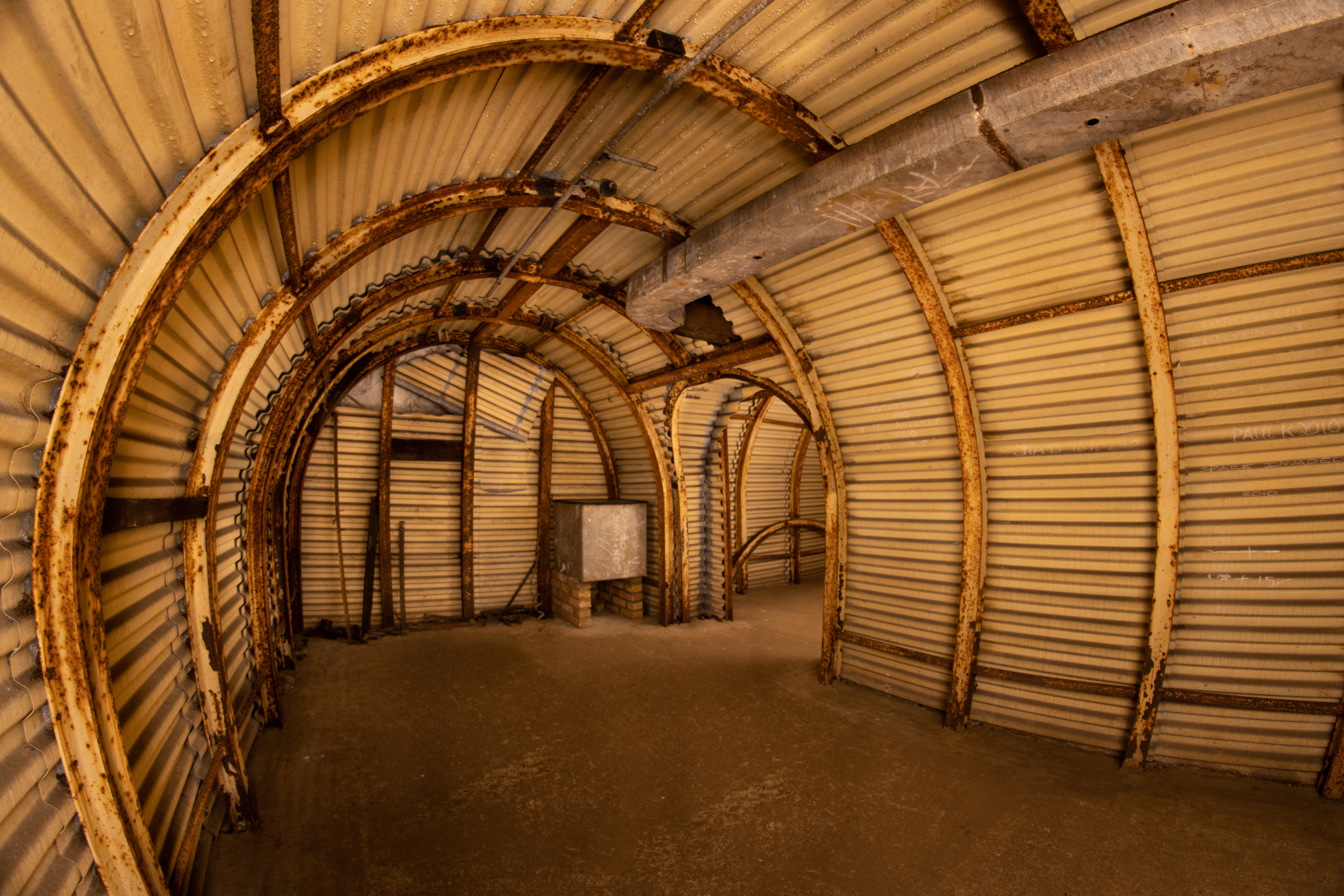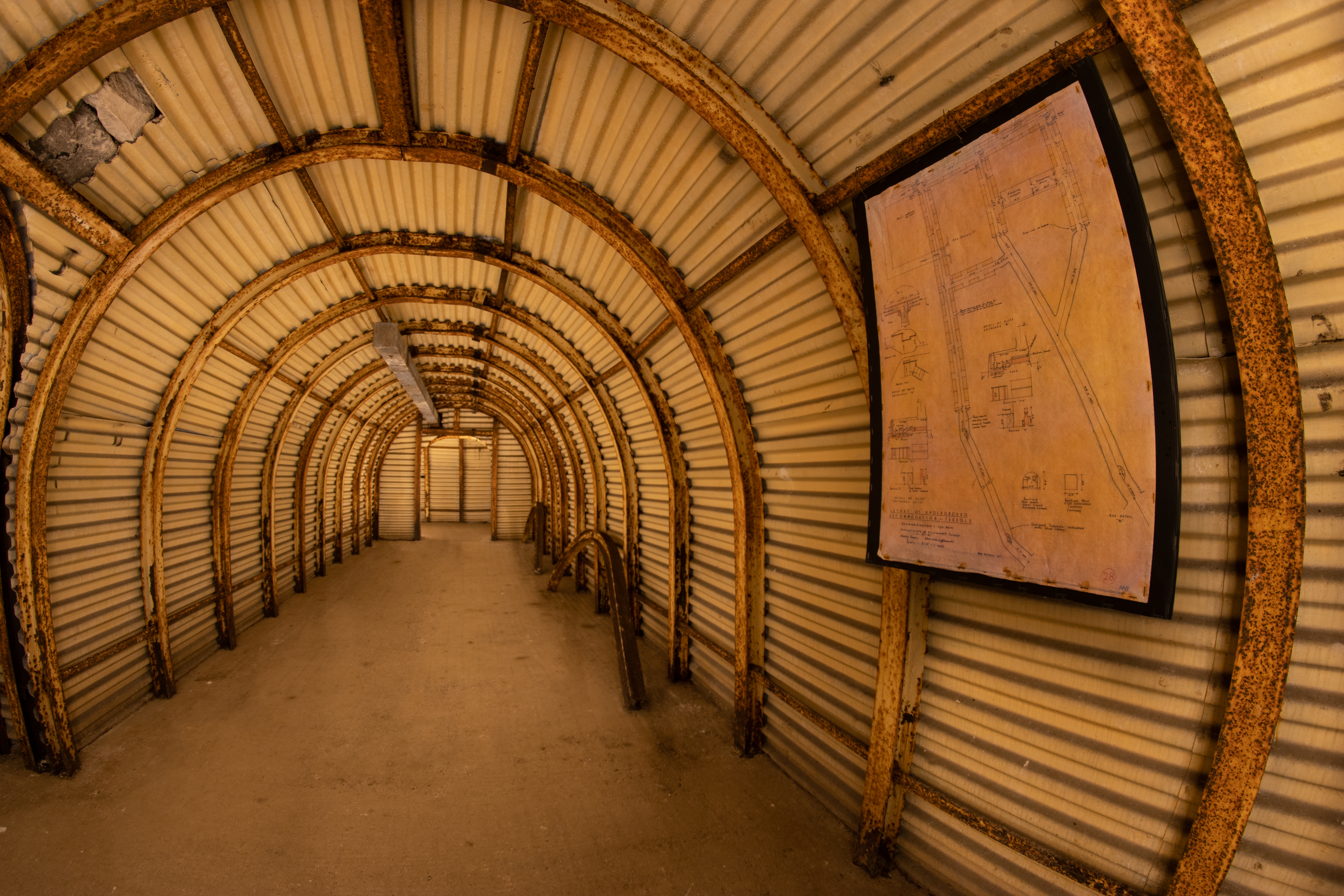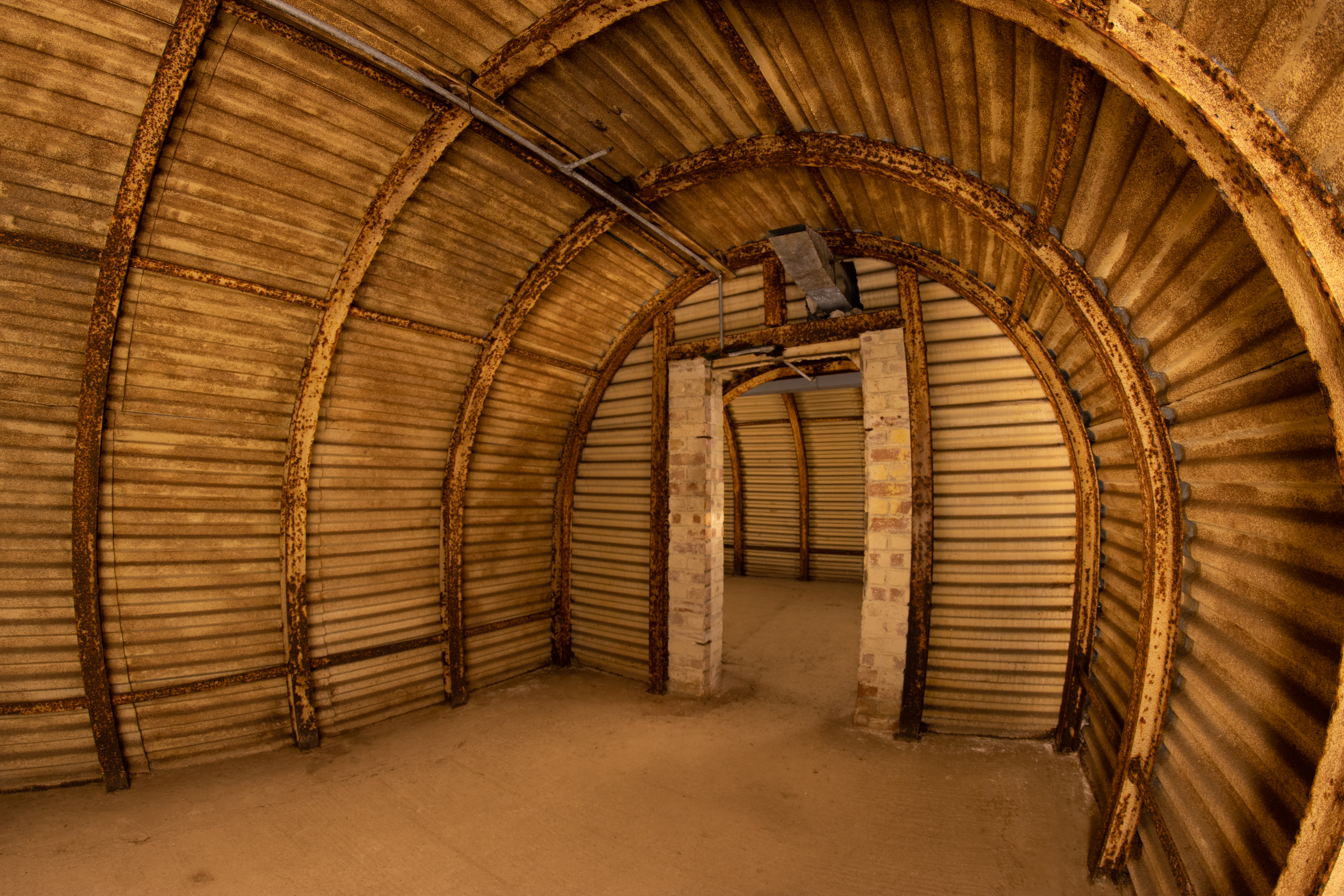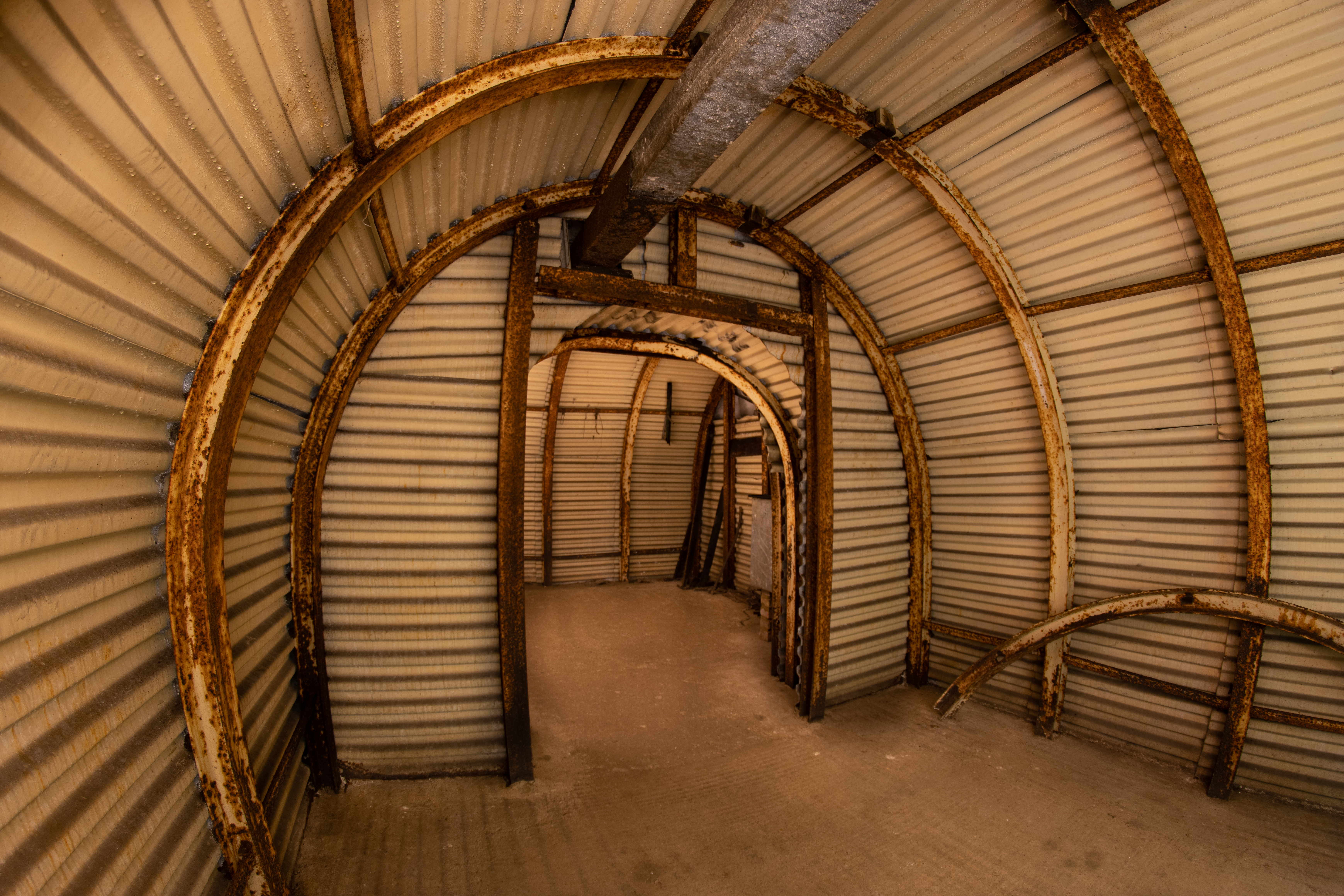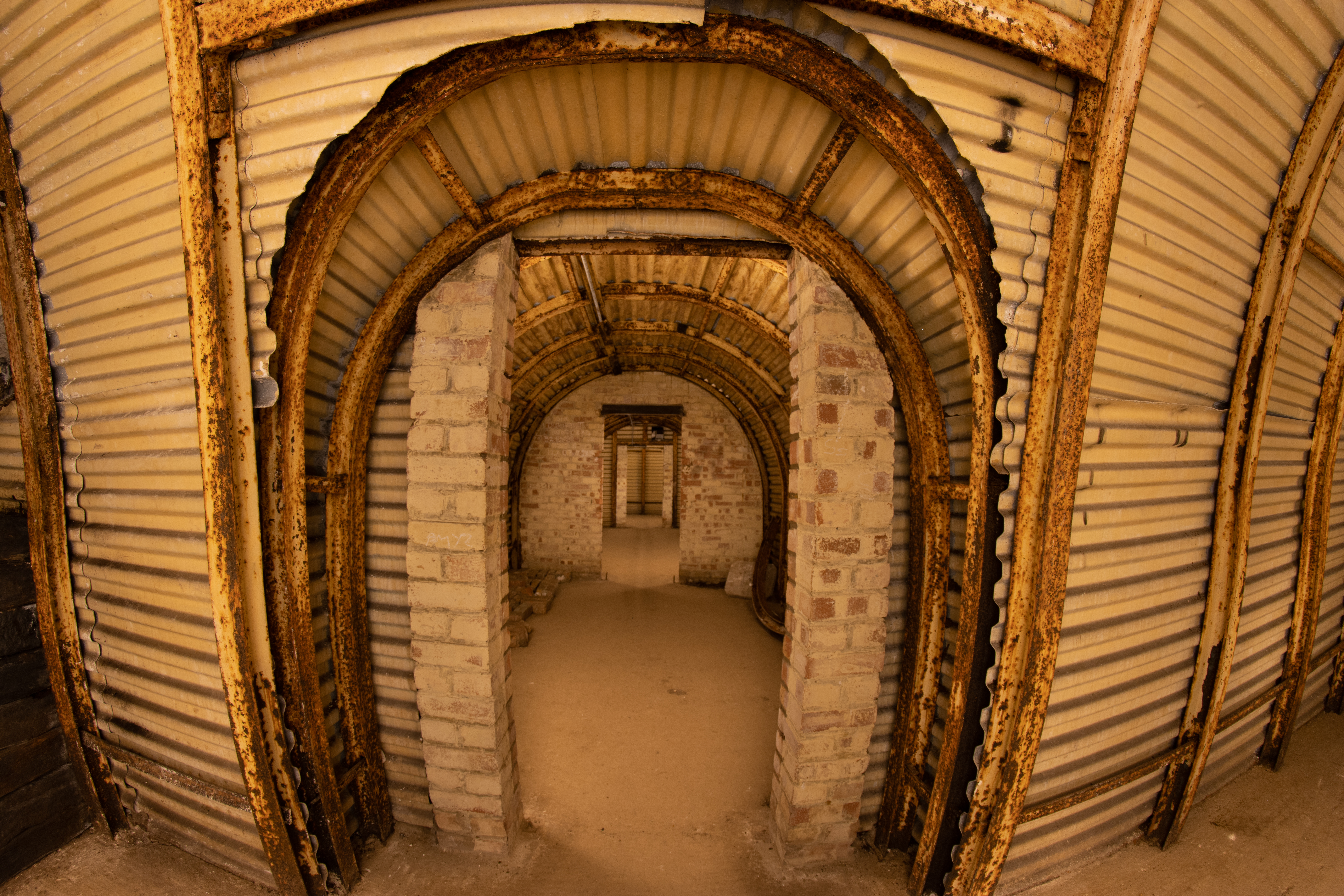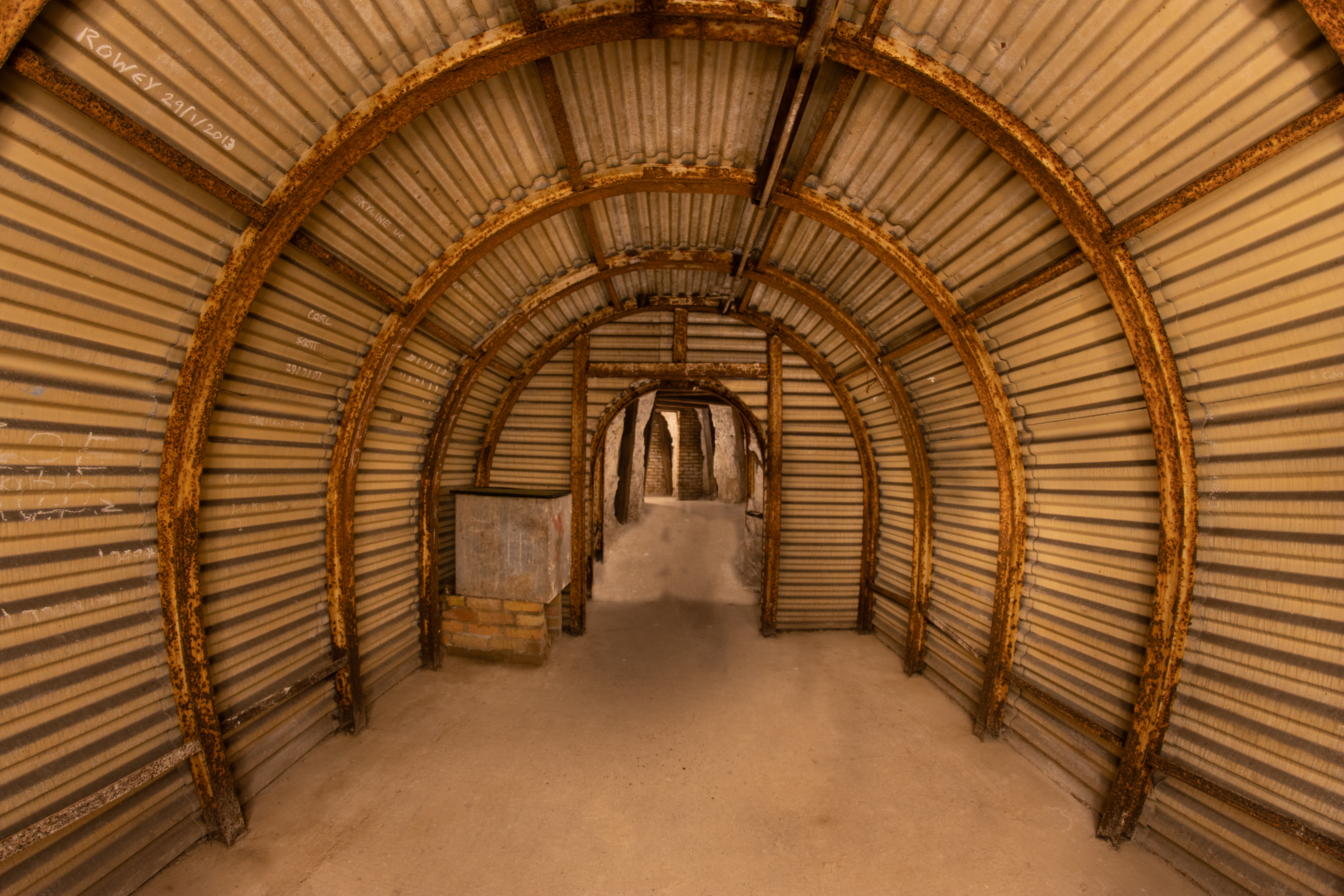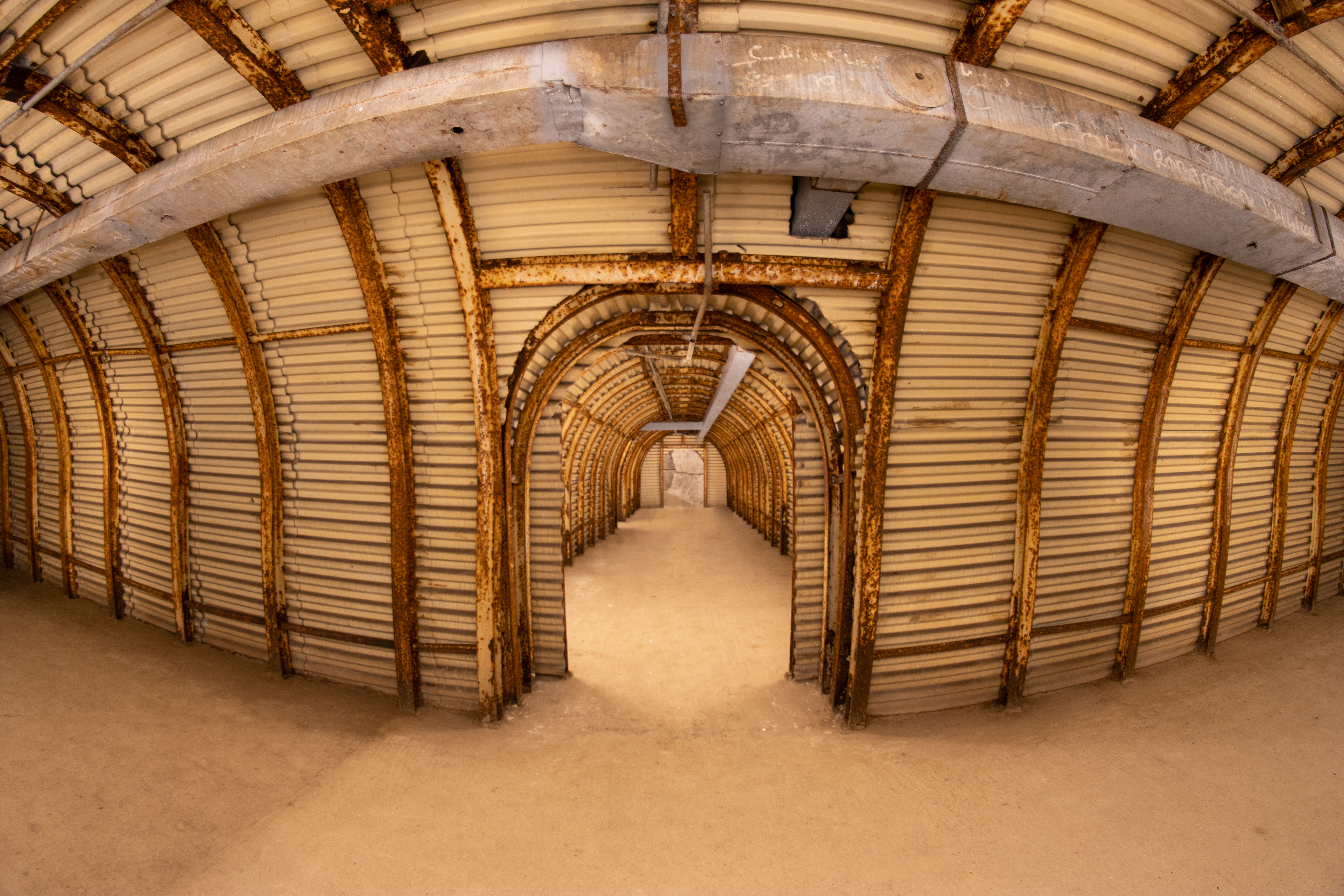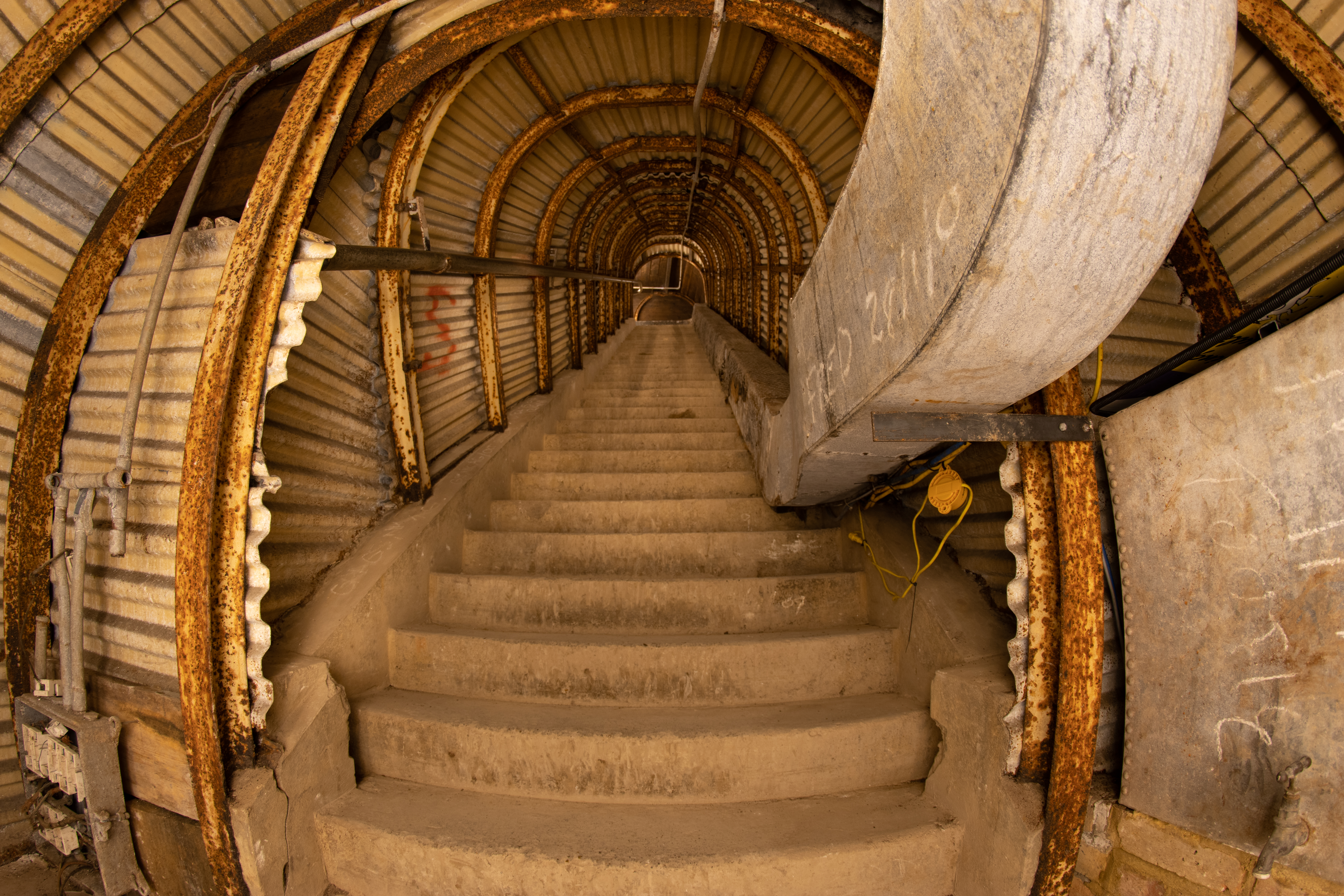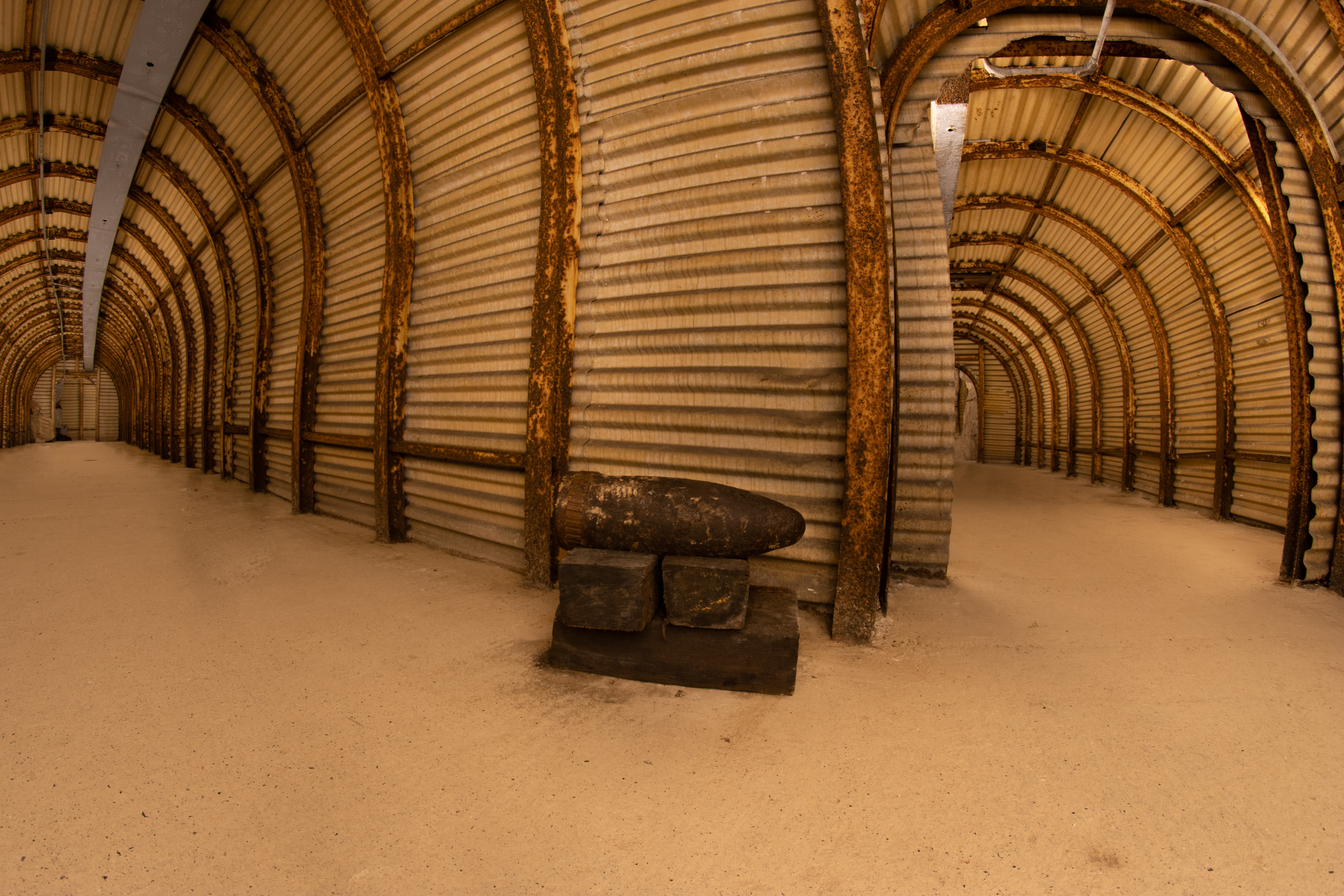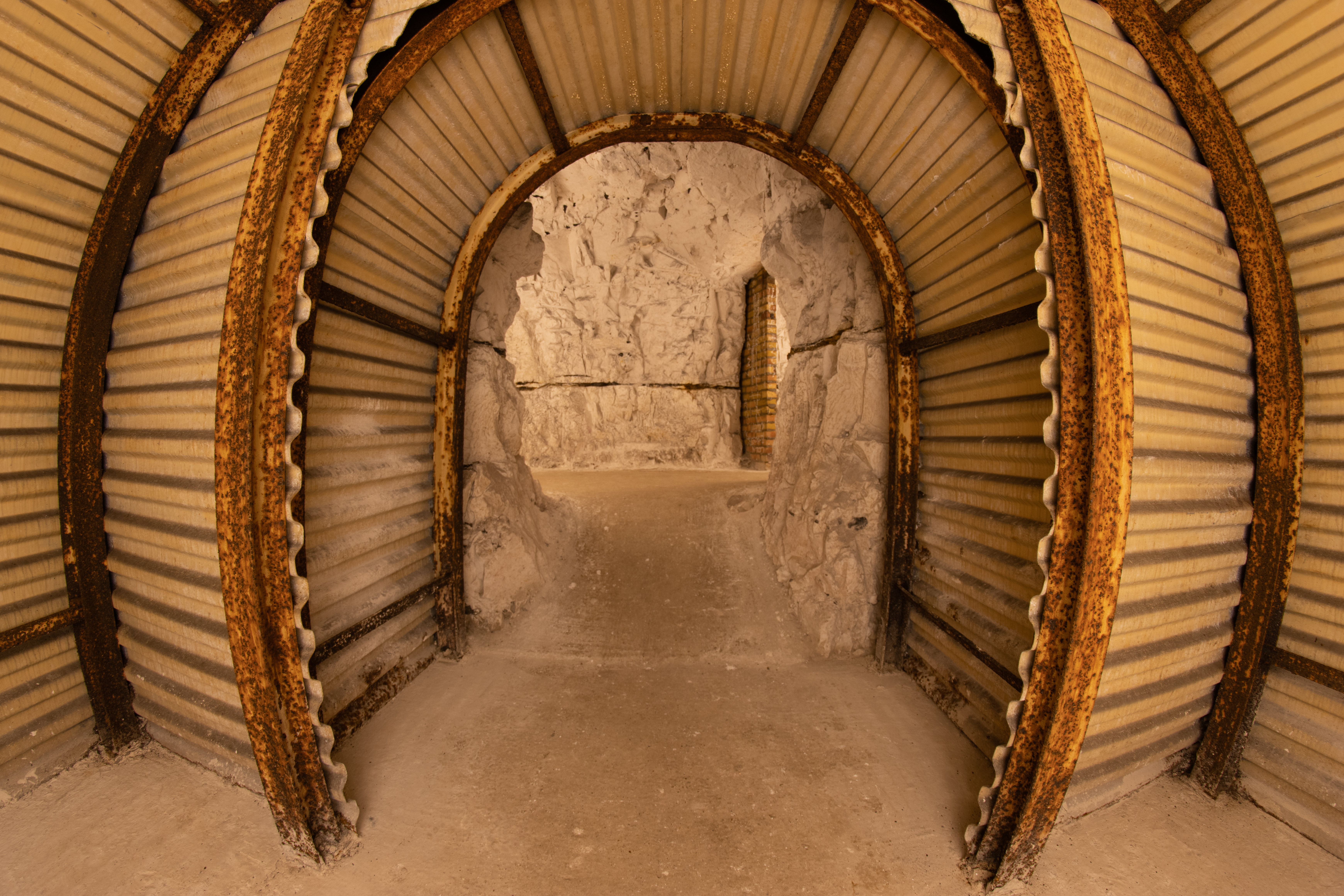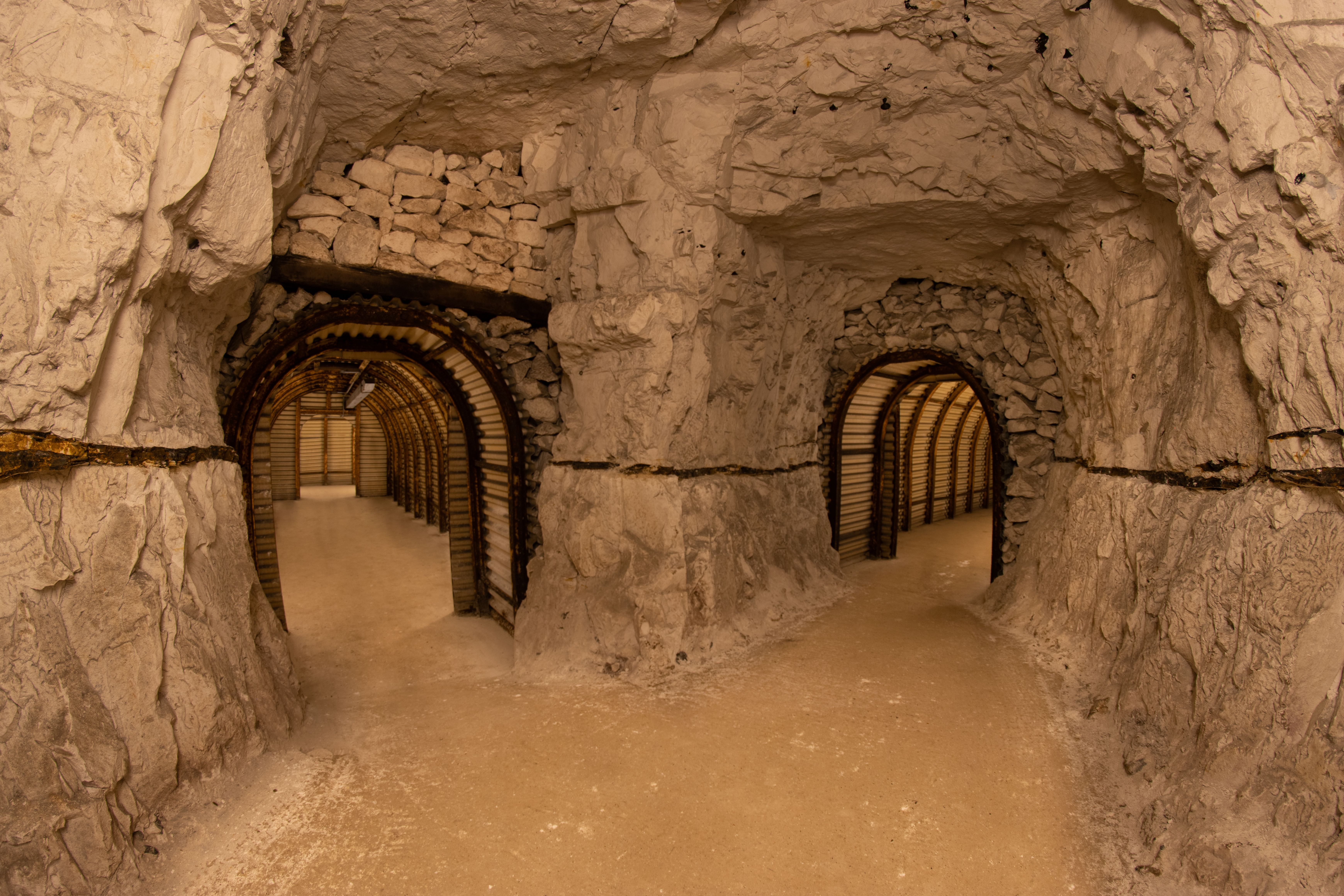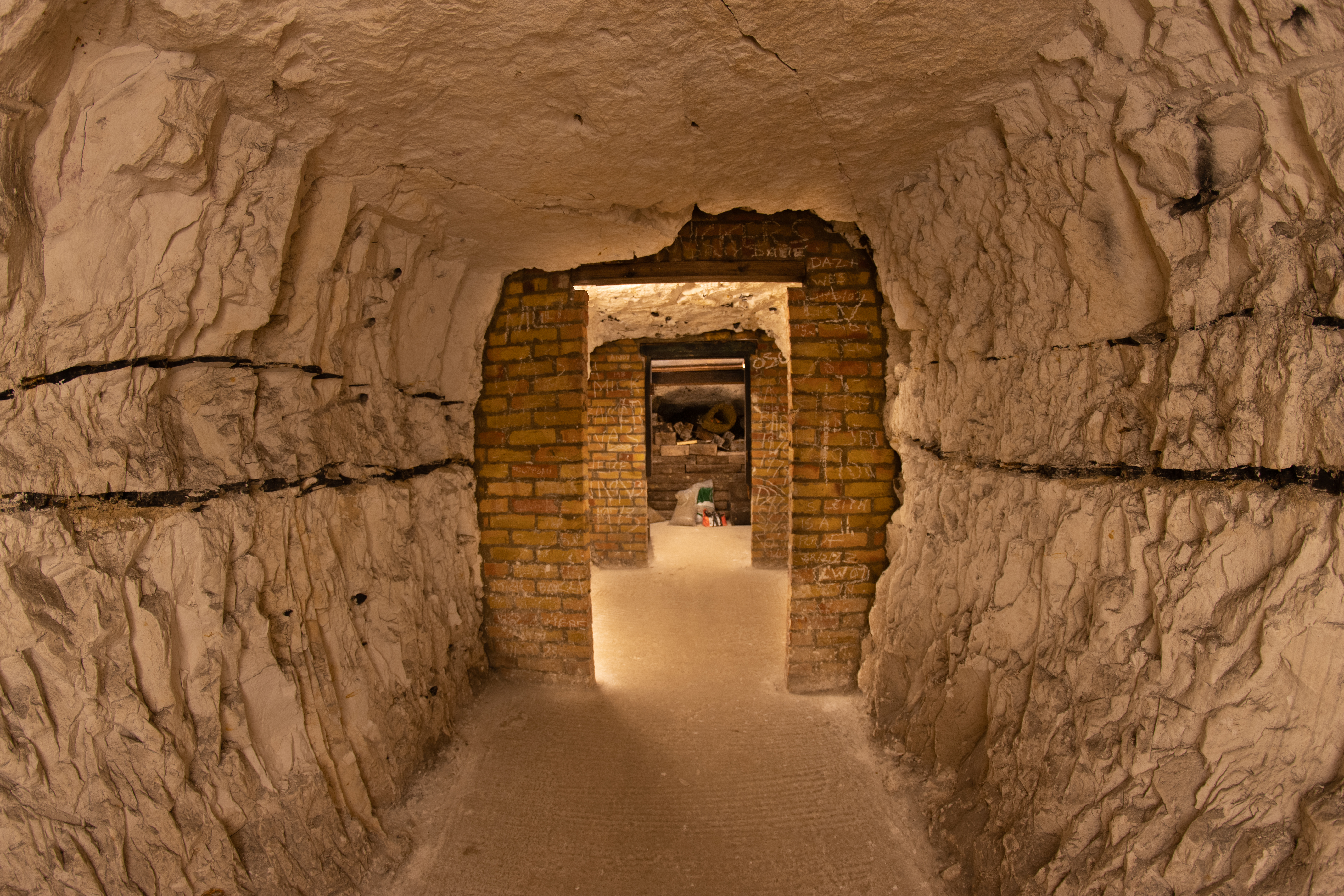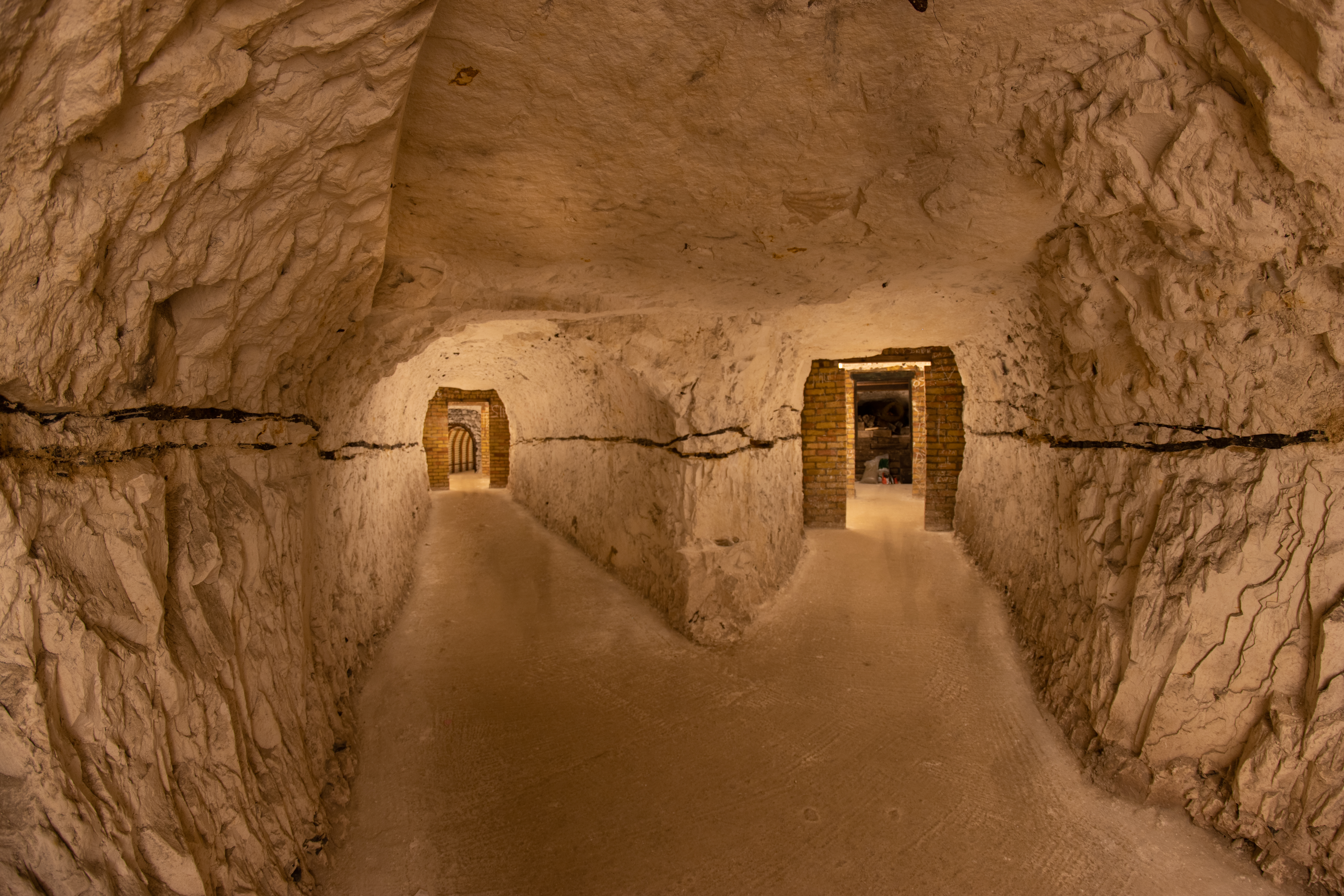Fan Bay Deep Shelter
The Fan Bay Battery, also known as Fan Hole Battery, was established in late 1940 on the clifftops north of Dover, overlooking the English Channel. It was one of three coastal batteries constructed to improve the effectiveness of defending against enemy shipping – something the earlier inland guns, Winnie and Pooh, had failed to do, much to Prime Minister Churchill’s dissatisfaction. The battery was equipped with three naval breech-loading 6-inch Mk VII guns, each with a range of 14 miles, and was operated by the 540th Coast Regiment, comprising four officers and 185 men.
To protect the battery’s personnel from aerial attack, a deep underground shelter was excavated into the chalk cliffs by the Royal Engineers’ 172nd Tunnelling Company between November 1940 and February 1941. The design followed a standard pattern used across the Dover area, with concrete stairways leading down into a bomb-proof grid of tunnels. These tunnels were lined with vaulted corrugated steel, supported by colliery-type hoops, and fitted with mechanical ventilation using overhead galvanised steel ducts. Originally, these ducts were insulated with a coating, which is now missing.
Fan Bay’s shelter was notably deeper than others in the region, requiring three flights of stairs to reach the main complex located 23 metres below the surface. The shelter featured five large chambers used for sleeping, operations, sanitation, and first aid. A unique feature of the site was two additional tunnels that extended to the cliff face, where two large sound mirrors were installed – early warning devices designed to detect incoming aircraft by focusing sound waves.
The sound mirrors represent an earlier chapter in the site’s military use. The smaller mirror, measuring 15 feet (4.6 metres) in diameter, was built around 1917 during the First World War. The larger, 20-foot (6.1 metres) mirror was constructed in the 1920s. These acoustic mirrors were part of a wider network built along the English coast between 1916 and the early 1930s, designed to concentrate incoming sound waves to a central receiver, allowing trained operators to detect distant aircraft before they were visible.
Following the Second World War, the tunnels were abandoned and sealed off. In the 1970s, all surface buildings were demolished during Operation Eyesore, a campaign aimed at removing derelict and unsightly military structures. Since then, only restricted access to the tunnels has been possible, although the site remains a significant historical and engineering relic of Britain’s wartime coastal defences.

